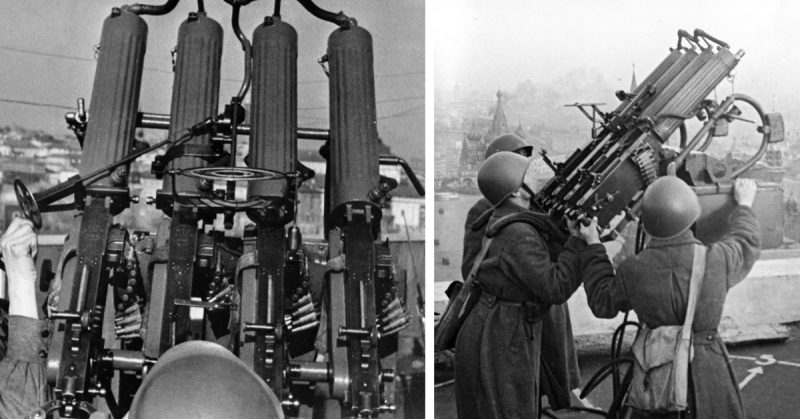Hiram Maxim
The Maxim gun was named after Hiram Maxim, an American inventor from Maine. He had an incredible talent for mechanisms, a skill he made his living from as an arms manufacturer. He made a fortune with a range of different schemes, then moved from the USA to the UK, where he produced the Maxim.
Inspired by an Army Rifle
The inspiration for the Maxim gun came from Maxim’s experience with a more conventional weapon. Given the opportunity to fire a .45-70 caliber army rifle, he noticed the kick the gun gave when fired. He wondered whether that energy could be used to power other mechanisms such as automatically loading and firing a gun.
That moment of insight led to all modern automatically firing weapons.
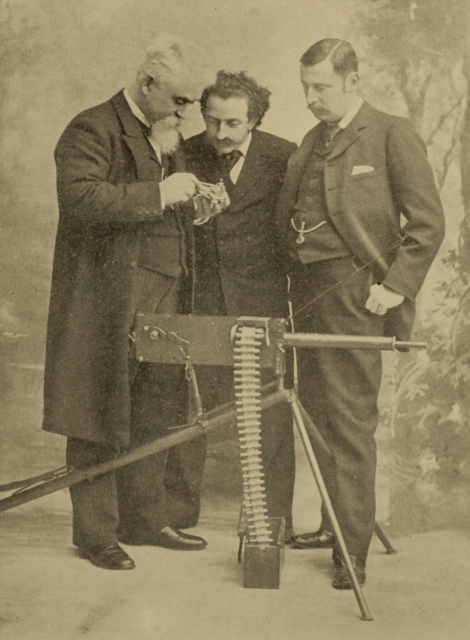
Born in 1884
The Maxim was first produced in 1884.
The First Automatic Machine Gun
Maxim’s gun was not the first machine gun. The Gatling and Williams guns proved useful during the American Civil War of 1861-1865. During the Franco-Prussian war of 1870-1871, the French fielded the Mitrailleuse, an unwieldy weapon whose limited range left it vulnerable to German artillery and ultimately disappointing as a weapon.
Those weapons were not automatic. They were powered by a soldier turning a crank to load and fire. The Maxim was the first gun to make that unnecessary.
All About the Breechblock
The Maxim gun’s loading and firing mechanism were based around the breechblock.
The barrel and breechblock of the gun were set up to recoil from the force of each shot. After moving three-quarters of an inch, the barrel stopped while the breechblock kept moving, separating from the barrel. As the breechblock moved back, it ejected the spent shell.
The movement of the breechblock connected with a set of levers attached to the ammunition belt. They pulled the belt a short distance, lining a cartridge up with the barrel. The breechblock then hit a spring and reversed its course. It drove the cartridge into the barrel, chambering it ready for the next shot.
The striker then swung in, firing the cartridge.
Keeping Up the Fire
The Maxim could keep shooting until the gunner let go of the trigger, or the ammunition belt ran out.
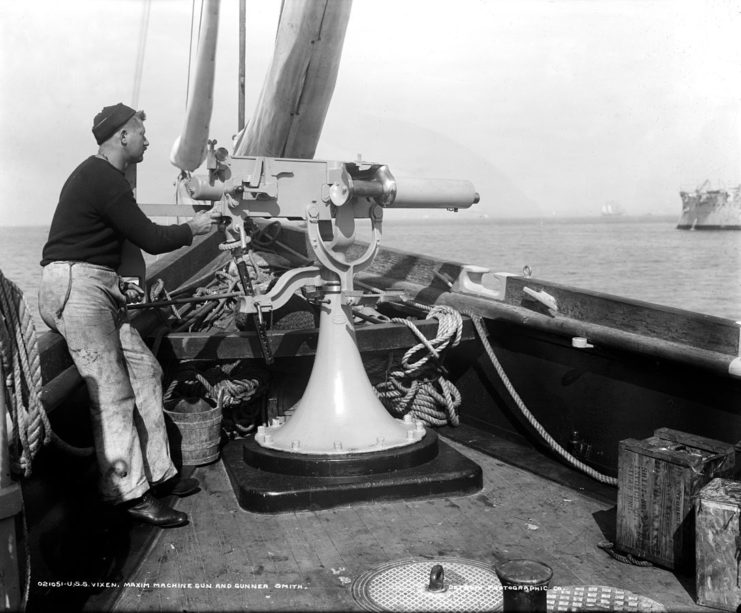
Ten Shots Per Second
The Maxim gun could fire 10 rounds per second or 600 per minute. It set the standard for decades, with the guns of WWI mostly able to fire at somewhere around that rate.
Variable Fire Rate
Although the Maxim could fire 600 rounds per minute, it was often excessive for what was needed. To give more control, it had a lever on the right of the gun’s receiver. It controlled a variable oil buffer which changed the rate of fire.
The Ammunition Belt
The gun was fed by a canvas belt into which ammunition was inserted. The belt for the original could hold 333 rounds. Its ends were linked together, allowing a continuous stream of fire.
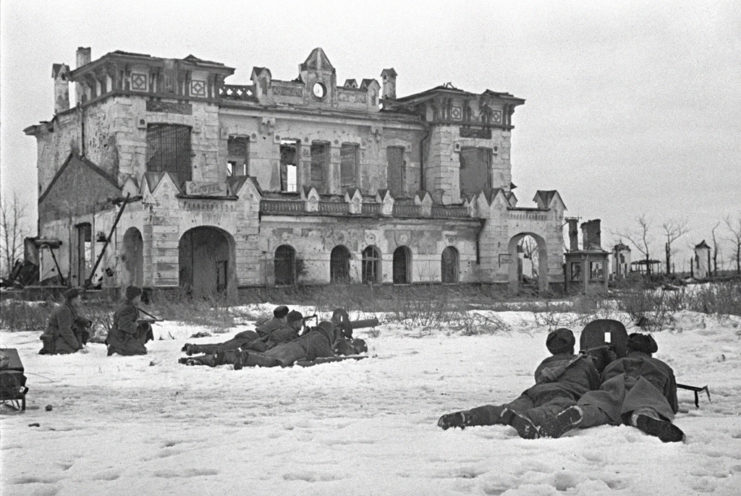
Water Cooling
With such a high rate of fire, over-heating could put a severe strain on the gun. A water jacket around the barrel kept it from over-heating, another innovation which became standard in the guns that followed.
Perfect from the Start
Maxim and his machine operators were incredibly talented. Due to his design work and their manufacturing, the Maxim functioned flawlessly from its first trials onward.
Entering Service
The British were quick to seize upon the potential of Maxim’s weapon. Their first production model, manufactured by Vickers, entered service with the army in 1891.
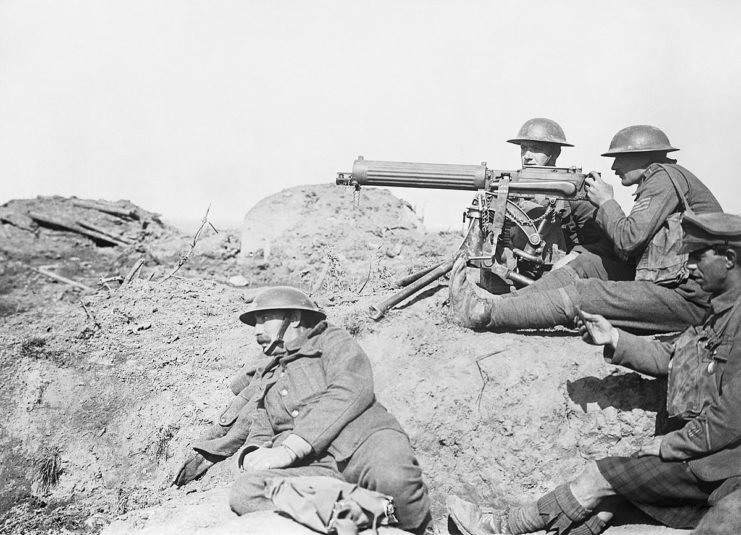
A Powerful Colonial Weapon
Faced with less well-equipped enemies, the Maxim gun was devastatingly formidable. Britain and other powerful countries used it to highly destructive effect in their colonial wars, mowing down enemies who sometimes did not even carry guns. During the Matabele War of 1893-4, fifty British infantrymen with four Maxim guns held off 5,000 Matabele in a 90-minute engagement, killing 3,000 of their attackers.
Not a Battle, But an Execution
One of the first significant colonial uses of the Maxim gun was during the Battle of Omdurman on September 2, 1898. British forces faced a vastly larger force of Sudanese Mahdists, but the British had six Maxim guns.
As the Mahdists jogged toward the British lines, the Maxim guns opened fire alongside the infantry. Hardly a single Mahdist got within a quarter of a mile of their enemies. 11,000 Sudanese died, almost all killed by the Maxim guns. The British and their Egyptian allies lost only 48 men.
“It was not a battle,” one eye-witness wrote, “but an execution.”
Russo-Japanese Action
The Maxim’s first use against an equally modern army came during the Russo-Japanese War of 1904-5. The Russians fielded Maxim guns, while the Japanese used the Hotchkiss, a machine-gun first brought into production by the French.
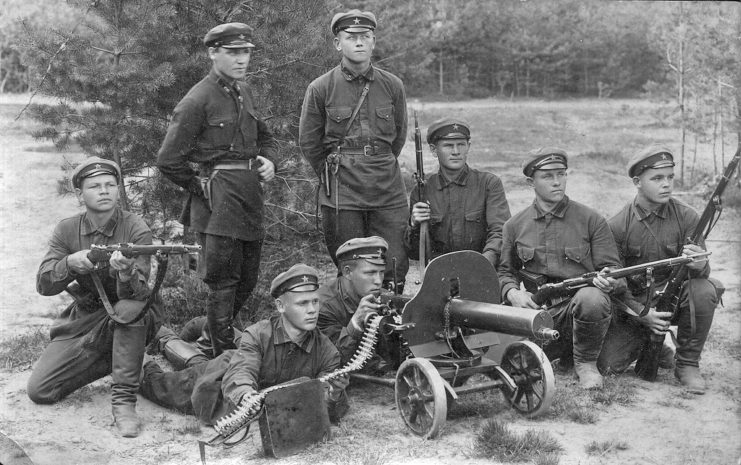
A Static Weapon
The Maxim was heavy, especially when filled with water and accompanied by its ammunition. As a result, it was usually deployed from static positions. It could provide covering fire during an attack or be used for defense, shooting from within a fortification.
Separating the Gun from the Carriage
One of the early lessons learned by Maxim operators was that they were better off separating the weapon from the wheeled carriage used to transport it. The gun could be settled on a stable position low to the ground, where it would be less obvious to enemies and where they could find cover. Meanwhile, the carriage would continue to draw enemy fire.
One of History’s Most Destructive Weapons
The British, Germans, and Russians all fielded guns based on the Maxim in WWI. Added together, Maxim-based guns have probably killed more people than any other gun in history.
Sources:
William Weir (2006), 50 Weapons that Changed Warfare
